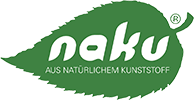The bioplastic cycle – FAQ
Video Content Playlist “The Bioplastics Cycle – FAQ”
The video content on the topic In the videos of the video series or playlist “The bioplastics cycle – FAQ” we explain the most important facts to you in 9 short videos and answer the most frequently asked questions about the bioplastics cycle that we are asked again and again.
The following questions on the subject of the bioplastics cycle are answered in the individual videos
- Intro – the bioplastic cycle
- Raw materials for the production of bioplastics
- The production of bioplastics
- Natural Plastic - The Plastic Cross
- Advantages of natural plastic/bioplastic
- Production with bioplastics
- Bioplastic recycling
- Decomposition of bioplastics
- Incineration of bioplastics
In principle, natural plastics or bioplastics can be produced from different renewable and plant-based raw materials. We use a starch compound made from corn for our breathable freshness bags. For example, a starch-based PLA (lactic acid) is used as a natural raw material for the NaKu organic bottles.
Bioplastics or natural plastics are based on renewable/vegetable raw materials, which are processed into a so-called compound through appropriate technical processing. This compound is a granulate that can then be further processed into end products. Depending on the application, this compound is obtained either from corn starch or from lactic acid.
The natural plastic (NaKu) or bioplastic combines two important requirements. Our products consist exclusively of renewable raw materials or completely degradable substances and are also biodegradable.
In order to be able to further process natural plastic/bioplastic into any desired shape, there are different options depending on the application. Each manufacturing process begins with the melting of the granules in a production machine that can more or less be compared to a "heatable meat grinder".
Our vision is to combine recycling and organic with our products made of bioplastics. Natural plastic/bioplastic primarily belongs to be recycled and is also very easily recyclable. With our products made of bioplastics, both sorting and recycling and, as a further step, the XNUMX% recovery of the molecular building blocks works very well.
Our natural plastic or bioplastic is biodegradable. This means in detail that it is compostable according to the DIN standard EN 13432 and thus also meets the requirement of becoming biogenic mass again within 90 days. Natural plastic/bioplastic is also combustible and recyclable. This means that it can be used again for the production of other products.
NaKu sees recycling and rotting as the most advantageous options for using natural plastics or bioplastics. From our point of view, the incineration of plastics of any kind is a backward type of recycling of waste. Of course, our NaKu organic bottle and organic bag can also be thermally recycled. The calorific value of bioplastics or natural plastic is 20kJ/kg. This means that bioplastic or natural plastic burns just as well as, for example, hardwood. However, our NaKu products made of bioplastics ensure far fewer pollutants in the exhaust gases due to the use of natural/vegetable raw materials and the natural biodegradability when recycled by incineration.
The natural plastic or bioplastic produced and processed by NaKu has many important advantages over conventionally known materials:
- NaKu is free of harmful substances
- NaKu has a lower CO2 Output
- NaKu protects the global oil resources
- NaKu can be recycled
- NaKu means upcycling
- NaKu decomposes in nature
- NaKu Sackerl is breathable and keeps food fresh for longer
- NaKu bags have multiple uses
